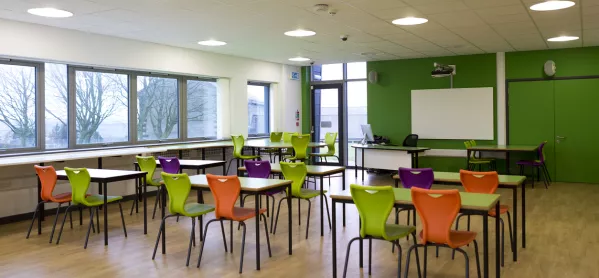I remember feeling paralysed during the September Inset days as my colleagues and I struggled with what we were being told: any isolating pupils would need to be taught remotely at the same time as we taught the rest of the class in person.
How were the remote learners going to see the board? How would we involve them in the lesson? Where should we stand for maximum impact? Would we need to essentially create two separate sets of resources: one for those in the classroom and another for those at home?
Now that I have had an opportunity to overcome my initial terror and we are nearing the end of the autumn term, I have had the opportunity to reflect on what is working both inside and outside my classroom.
Coronavirus: Getting online learning right
Let’s start with what research suggests are the important things to remember when delivering remote learning. Professor Paul Kirschner’s number one on this list is “stick to the essentials”.
Now, imagine the advice you would give a teacher struggling with their planning in a “normal” environment. What are the desired outcomes? How will they get there? Again, stick to the essentials.
So, that is what I have decided to do. In the face of an overwhelming amount of technology, I have decided that, for the majority of my lessons, I am returning to the modern-day equivalent of the old-school OHP; the visualiser.
Why the visualiser is key
As an English teacher, perhaps I am a little late to the visualiser party. My over-reliance on PowerPoint has meant that it has featured infrequently in my lessons.
However, with cognitive overload being a more resonant consideration than ever, I am abandoning text-heavy presentations (that often served as little more than a lesson plan for me).
Gone are my days of trying to align stubborn interactive whiteboards, of rubbing sentences off the board followed by protests by those who haven’t finished copying down. I am sticking with the visualiser.
A flexible learning tool
It really is all I need in the current climate. The students in the room can see what I am annotating, the students on Zoom can see what I am writing more clearly than with any other method, and, when it comes to the group discussion and wanting to involve the remote learner, I can turn it around and point it towards the students in the room.
Likewise, it is perfect for instant feedback on students’ work during the lesson and live marking.
Want to set a meaningful piece of home learning? Record yourself working through an exam question under the visualiser and ask your students to write down the steps you take to complete the task.
I am not saying that there isn’t a place for Google Classroom, OneNote and the rest. All of my students have digital access to detailed presentations, should they wish to refer back to them at home. But, for the majority of my actual lessons, it is me, the kids, the text and the visualiser.
Katherine Burrows is assistant director of teaching and learning at a secondary school




